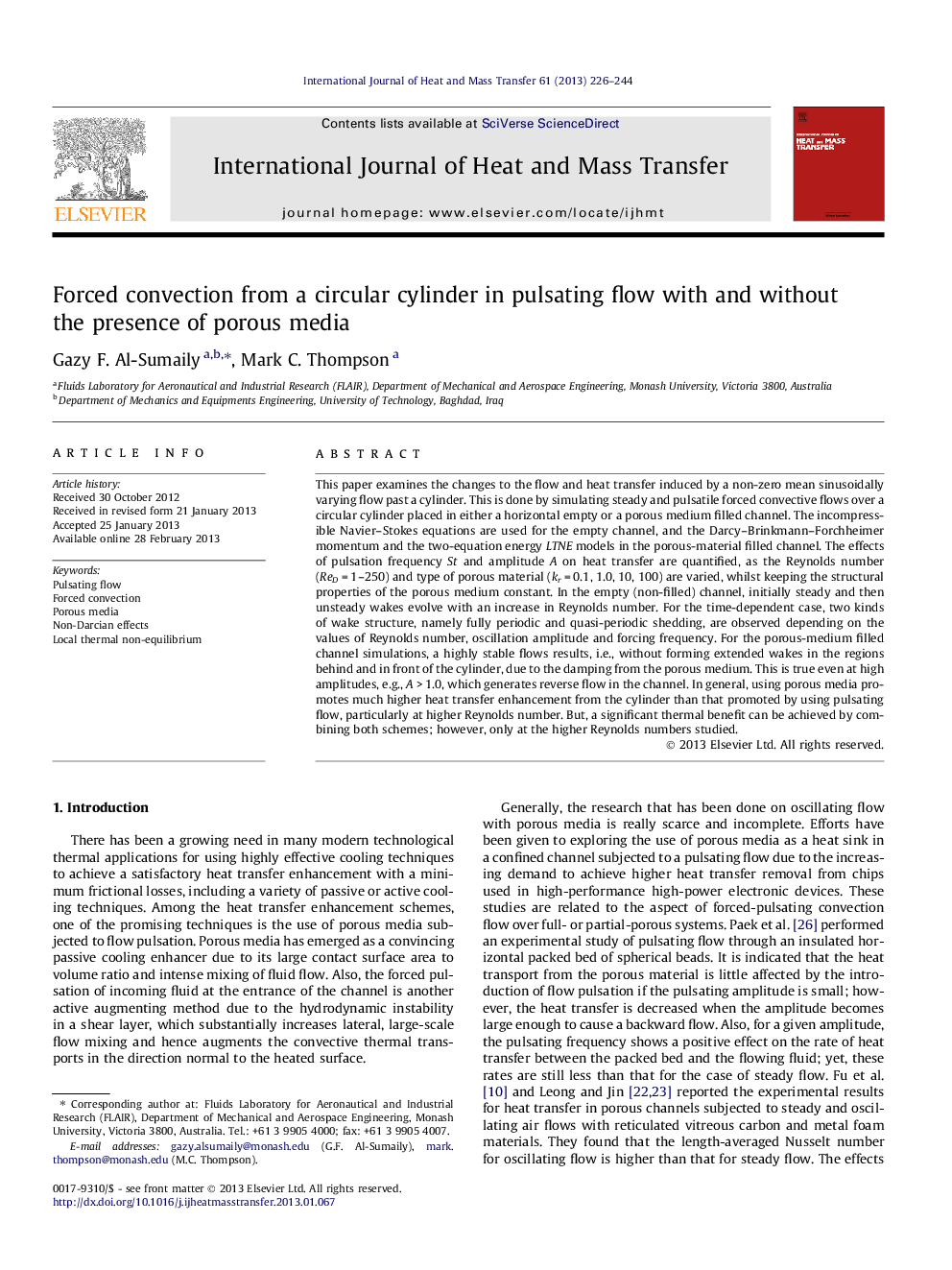| کد مقاله | کد نشریه | سال انتشار | مقاله انگلیسی | نسخه تمام متن |
|---|---|---|---|---|
| 7058913 | 1458081 | 2013 | 19 صفحه PDF | دانلود رایگان |
عنوان انگلیسی مقاله ISI
Forced convection from a circular cylinder in pulsating flow with and without the presence of porous media
ترجمه فارسی عنوان
جابجایی اجباری از یک سیلندر دایره ای در جریان پالسی با و بدون حضور رسانه متخلخل
دانلود مقاله + سفارش ترجمه
دانلود مقاله ISI انگلیسی
رایگان برای ایرانیان
کلمات کلیدی
جریان پویا کنسانتره اجباری، رسانه های متخلخل، اثرات غیر دارویی، محلی غیر قابل تعادل حرارتی،
موضوعات مرتبط
مهندسی و علوم پایه
مهندسی شیمی
جریان سیال و فرایندهای انتقال
چکیده انگلیسی
This paper examines the changes to the flow and heat transfer induced by a non-zero mean sinusoidally varying flow past a cylinder. This is done by simulating steady and pulsatile forced convective flows over a circular cylinder placed in either a horizontal empty or a porous medium filled channel. The incompressible Navier-Stokes equations are used for the empty channel, and the Darcy-Brinkmann-Forchheimer momentum and the two-equation energy LTNE models in the porous-material filled channel. The effects of pulsation frequency St and amplitude A on heat transfer are quantified, as the Reynolds number (ReD = 1-250) and type of porous material (kr = 0.1, 1.0, 10, 100) are varied, whilst keeping the structural properties of the porous medium constant. In the empty (non-filled) channel, initially steady and then unsteady wakes evolve with an increase in Reynolds number. For the time-dependent case, two kinds of wake structure, namely fully periodic and quasi-periodic shedding, are observed depending on the values of Reynolds number, oscillation amplitude and forcing frequency. For the porous-medium filled channel simulations, a highly stable flows results, i.e., without forming extended wakes in the regions behind and in front of the cylinder, due to the damping from the porous medium. This is true even at high amplitudes, e.g., A > 1.0, which generates reverse flow in the channel. In general, using porous media promotes much higher heat transfer enhancement from the cylinder than that promoted by using pulsating flow, particularly at higher Reynolds number. But, a significant thermal benefit can be achieved by combining both schemes; however, only at the higher Reynolds numbers studied.
ناشر
Database: Elsevier - ScienceDirect (ساینس دایرکت)
Journal: International Journal of Heat and Mass Transfer - Volume 61, June 2013, Pages 226-244
Journal: International Journal of Heat and Mass Transfer - Volume 61, June 2013, Pages 226-244
نویسندگان
Gazy F. Al-Sumaily, Mark C. Thompson,
